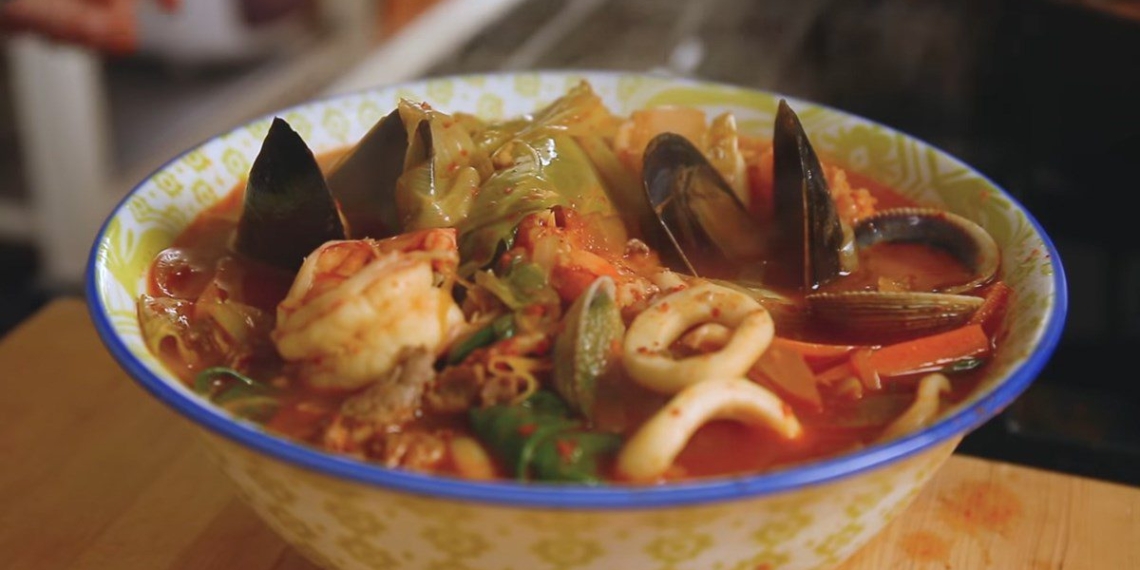-
Preparation
20 minutes
-
Cooking
30 minutes
-
Difficulty
Easy
Ingredients for Spicy Seafood Ramen Champong Serves 2 people
Dried anchovies 28 gr Dried kelp 100 gr Mussels 200 gr Prawns 400 gr Squid 100 gr Clams 500 gr Beef 100 gr (or pork/chicken) Ramen noodles 400 gr Onion 100 gr Baro onion 1 stalk Green onion 4 stalks Bok choy 100 gr Cabbage 60 gr Carrot 200 gr Minced garlic 1 tablespoon Minced ginger 1 teaspoon Sesame oil 1 teaspoon Korean chili powder 5 tablespoons Vegetable oil 3 tablespoons Fish sauce 1 tablespoon Salt 1 teaspoon
How to choose fresh and delicious ingredients
How to choose fresh shrimp
- To choose delicious shrimp, you should observe the shrimp’s shell, selecting those with a clear, firm shell; avoid those with thin shells that stick tightly to the shrimp meat.
- Fresh shrimp usually have a smell of seawater, with no fishy or foul odor.
- You should choose shrimp with tails that are tightly folded together; those with tails spread out are often no longer fresh or may have been treated with chemicals.
- At the same time, shrimp with legs that are neatly arranged and firmly attached to the body are still fresh; do not buy shrimp that feel soft and slimy when touched.
How to choose fresh squid
- To choose fresh squid, first, you should observe its color, selecting those with shiny colors, and bodies that are milky white with dark red spots.
- You can also check the freshness of the squid by pressing on its body; fresh squid will quickly return to its original shape after being pressed and will feel elastic when touched.
- Additionally, observing the eyes is an effective way to choose fresh squid; select those with slightly bulging, clear eyes that are not leaking yellow slime.
How to choose fresh and delicious mussels
- Choose mussels with intact shells, not broken or without shells.
- In addition, you can smell them; if the mussels have a sea smell, they are still fresh. If a foul odor appears, it indicates that the mussels are spoiled, and you should not buy them.
- The shells of mussels are usually dark brown and shiny; avoid purchasing those with unusual colors.
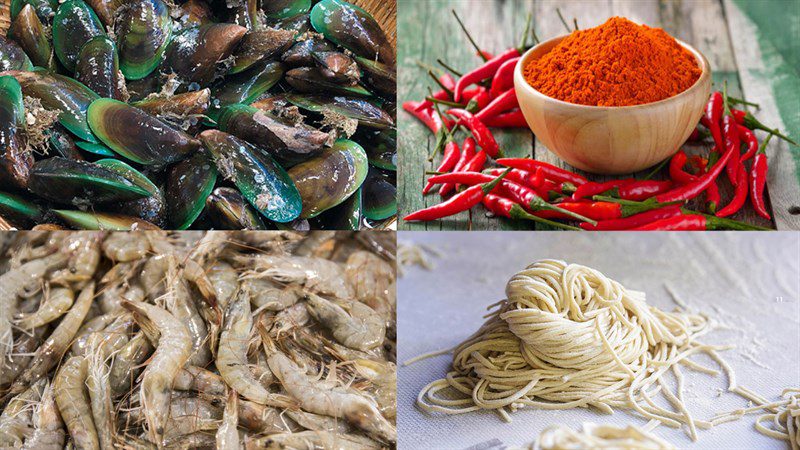
Tools needed
Non-stick pan, pot, strainer, bowl, ladle,…
How to prepare Spicy Seafood Noodles Champong
-
Make the broth
Place a pot on the stove, add 1.2 liters of water, and turn the heat on high. Wait for the water to boil, then add the prepared anchovies and dried kelp, and simmer for 20 minutes.
After 20 minutes, reduce the heat and continue to simmer for another 20 minutes. After 40 minutes, the broth is ready; you use a strainer to remove the anchovies and dried kelp. Finally, you have about 1.2 liters of broth.
Tip:
- To make the broth richer and tastier, you should choose larger anchovies; do not select very small ones as they contain fewer nutrients.
- To reduce bitterness when making the broth, remove the heads and guts of the anchovies before adding them to the pot.

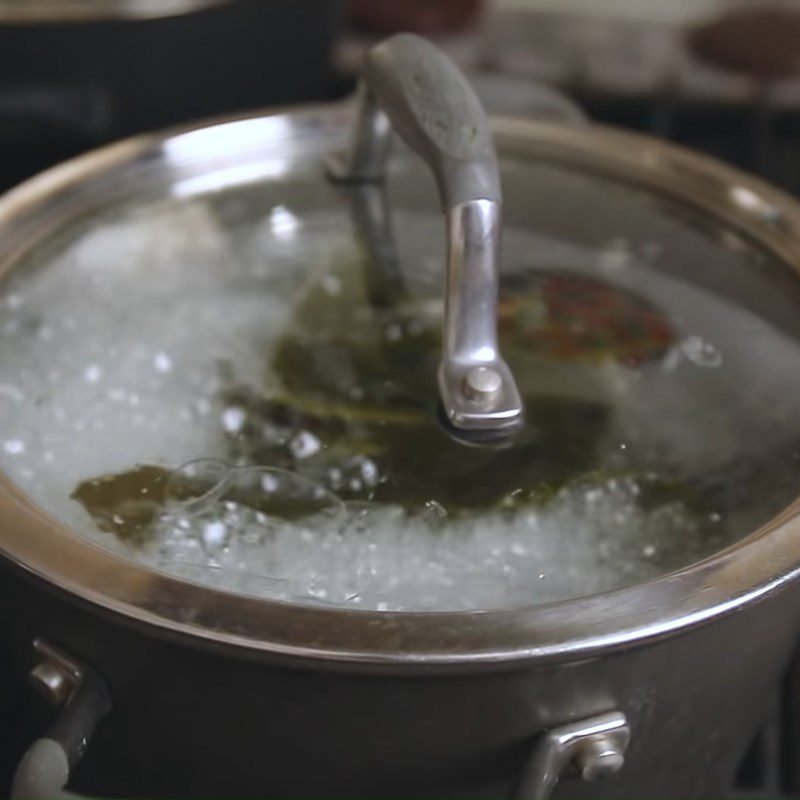
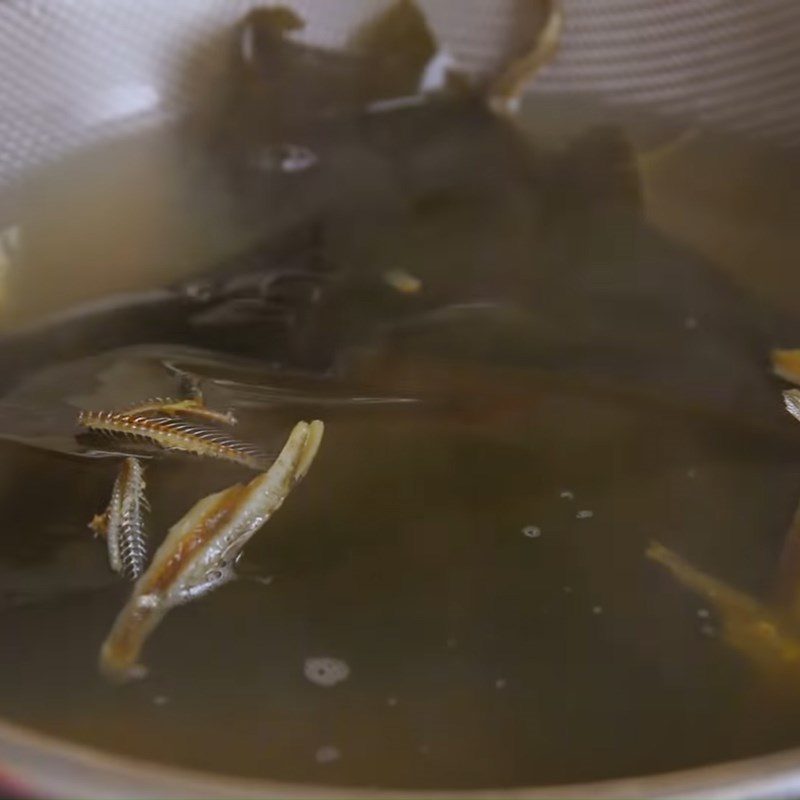

-
Prepare vegetables
Remove the wilted leaves and roots from the baro onion and green onion, wash them clean with water, and cut into pieces about 2 finger lengths long.
Cut off the root of the bok choy, separate the leaves, and wash them thoroughly with water.
Separate the layers of the white cabbage, wash them thoroughly with water, and cut into large pieces for easy eating.
Peel the onion and remove the roots, wash it clean, and slice it thinly. Peel the carrot, wash it clean, and cut it into thin strips about 2 finger lengths long.

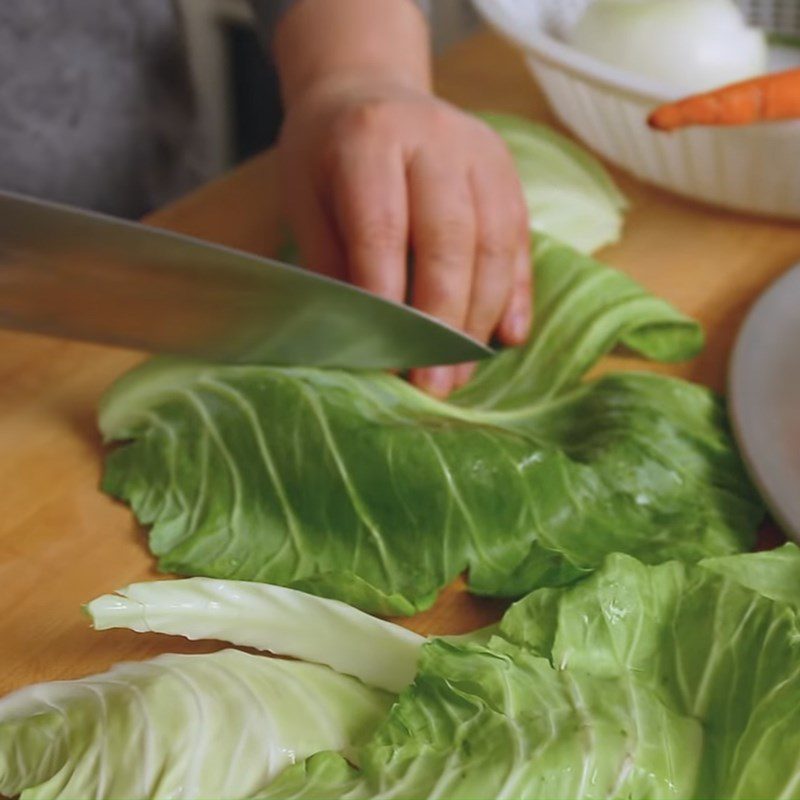
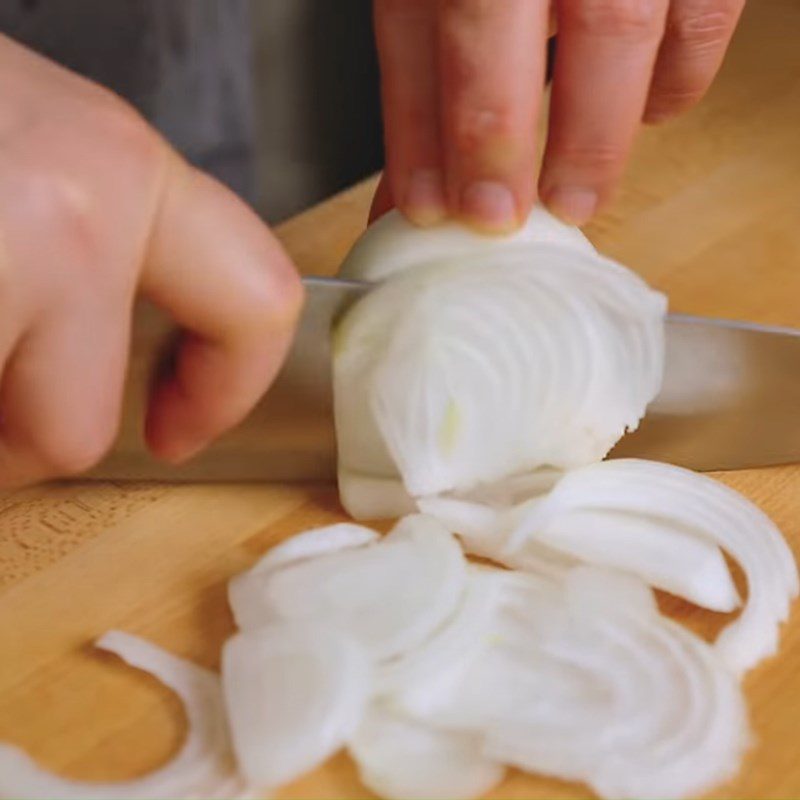

-
Preparation of seafood and meat
Mussels should be cleaned of hair and algae, soaked in salt water for 2 – 3 hours, and rinsed with cold water.
Shrimp should be carefully peeled. Then, cut along the back of the shrimp, gently removing the intestinal vein from the back. After that, rinse with water and drain.
For this dish, we only use the body of the squid, so we will cut off the squid’s head, gently pull out the squid’s bone, intestines, and outer skin. Then, wash thoroughly with water.
Tip: To easily and quickly peel the squid skin, you can use table salt to rub on the skin and carefully peel it off.Clams should be soaked in salt water for 2 – 3 hours, then rinsed with water.
Beef should be washed with water, use paper towels to absorb moisture so that the meat is dry and free of blood, then slice into thin pieces.

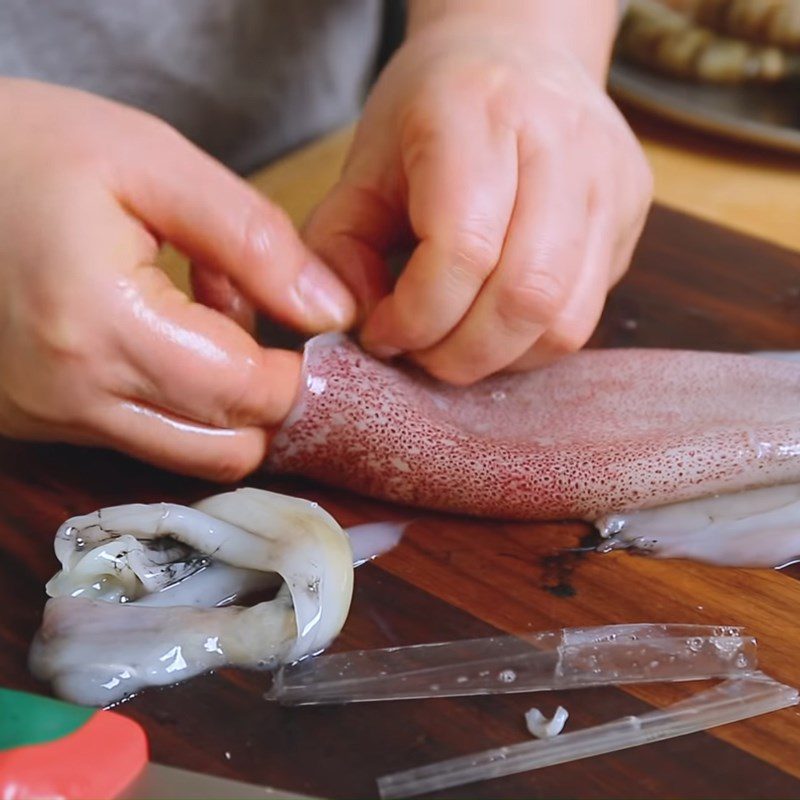


-
Stir-fry meat and vegetables
Add 2 tablespoons of Korean chili powder and 1 teaspoon of sesame oil into a bowl, and mix well.
Heat a pan on the stove, and once the pan is hot, add 1 tablespoon of cooking oil. Next, add 1 tablespoon of minced garlic and 1 teaspoon of minced ginger, stirring continuously until the garlic and ginger turn light brown and release their aroma, then add the beef and stir well.
Once the beef is slightly cooked, push it to one side of the pan and add 3 tablespoons of Korean chili powder to the other side. Mix the chili powder and beef together.
Next, add green onions, baby onions, cabbage, onion, and carrots. Turn up the heat and stir continuously so that the ingredients and vegetables are coated with a layer of chili powder.




-
Cook spicy seafood broth
After 5 minutes, the vegetables and meat have absorbed the flavors, add 1.2 liters of broth and continue to heat. After 3 minutes, add all the prepared seafood and bok choy, and mix well so that the seafood and vegetables are cooked and evenly seasoned.
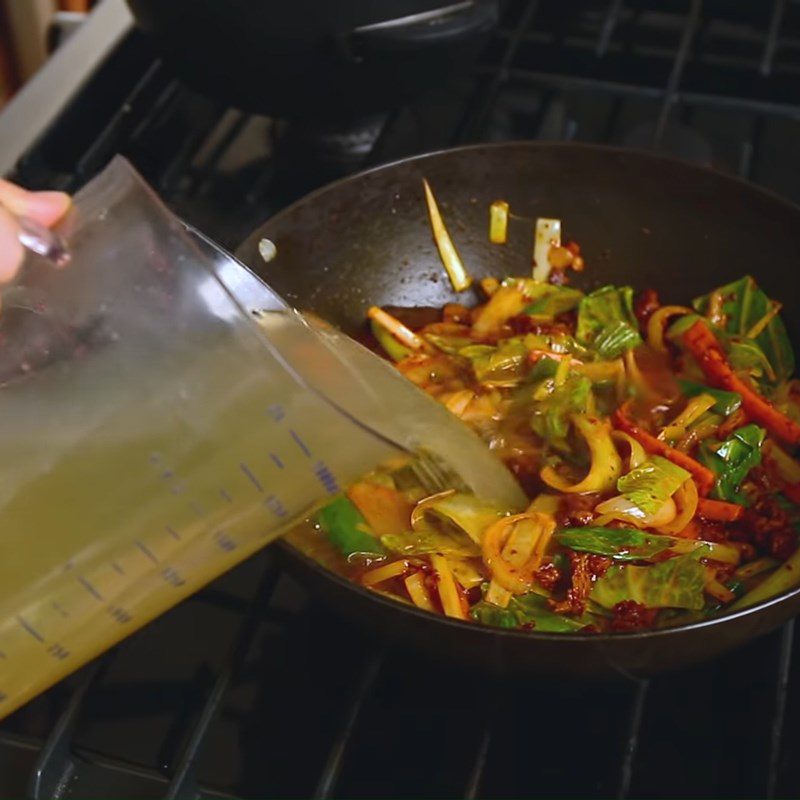

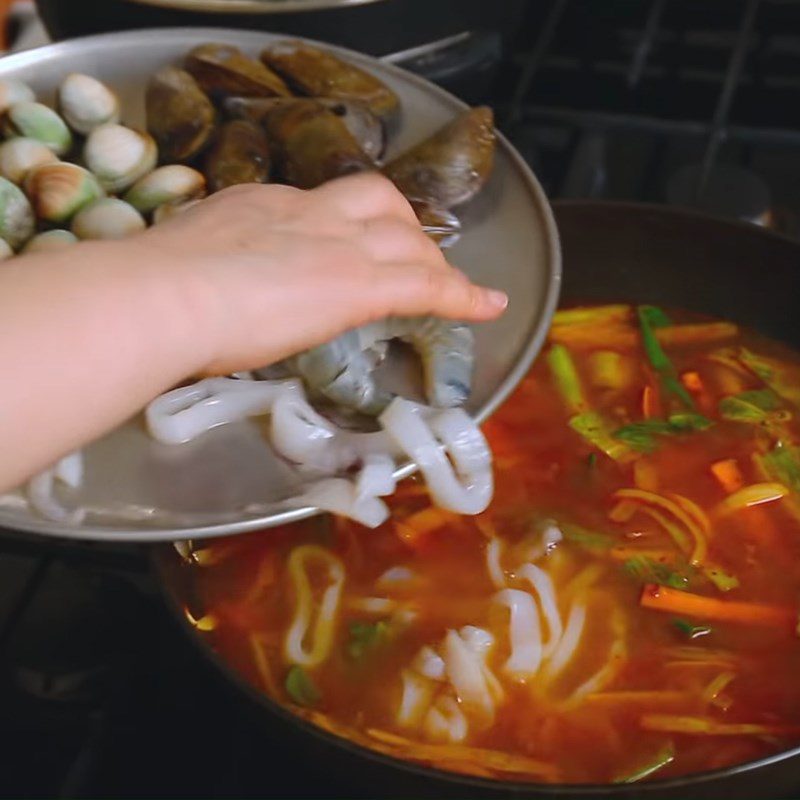
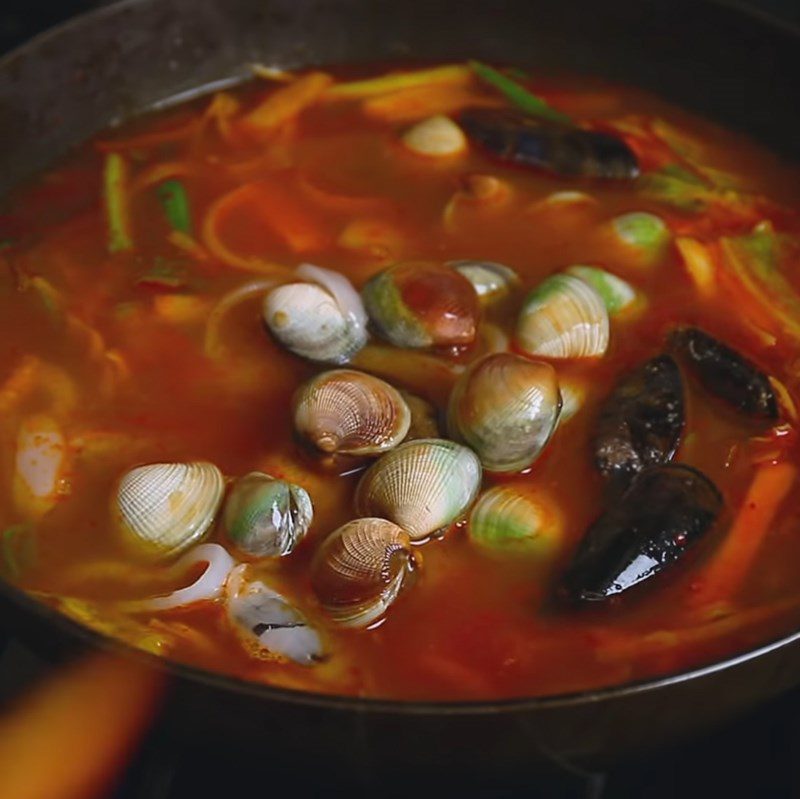
-
Blanch the noodles
Place a pot on the stove, add about 500ml of water, and bring to a boil. Once the water is boiling, add the prepared ramen noodles, and use a ladle to stir lightly to separate the noodles and prevent them from sticking together.
After 10 minutes, the noodles are cooked, remove the noodles, and briefly rinse them in cold water, then drain.
Tip:
- To determine if the noodles are cooked, you can observe the color of the noodles; cooked noodles will turn translucent white, while uncooked noodles will appear opaque white.
- To increase the chewiness of the noodles, after cooking, remove the noodles and briefly rinse them in cold water.

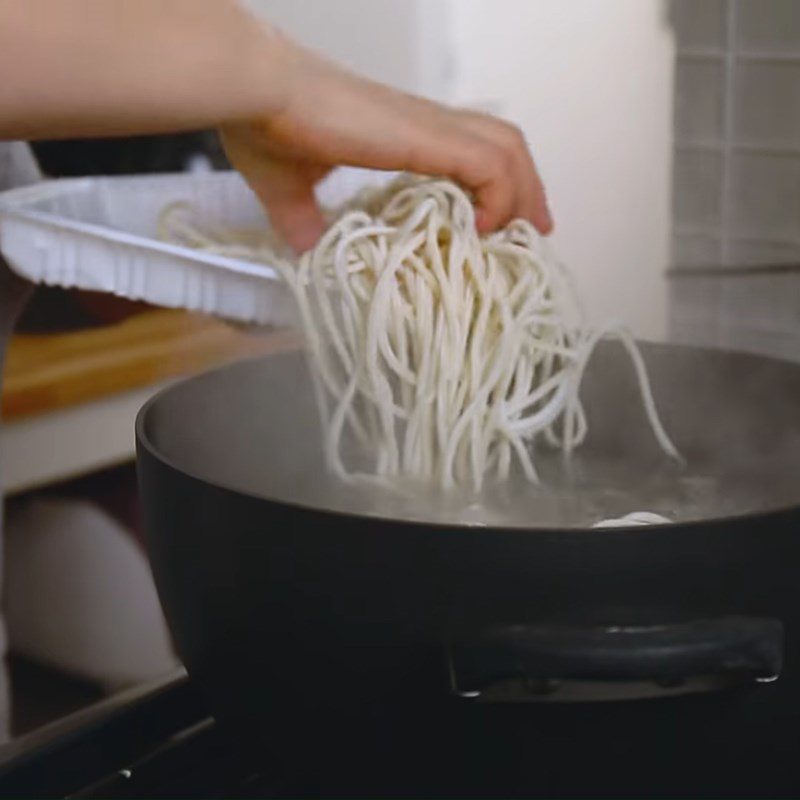
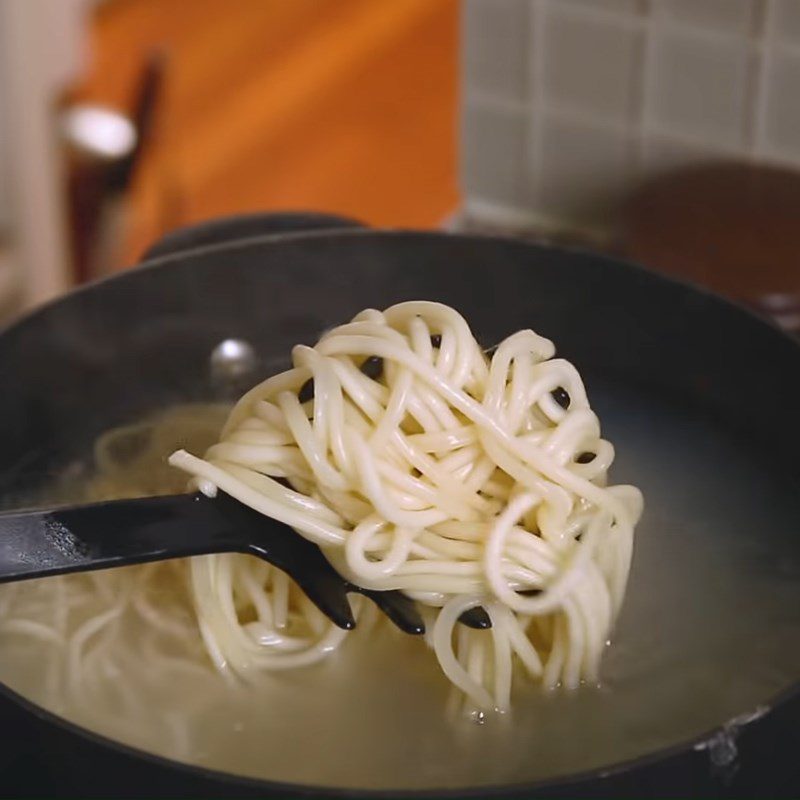
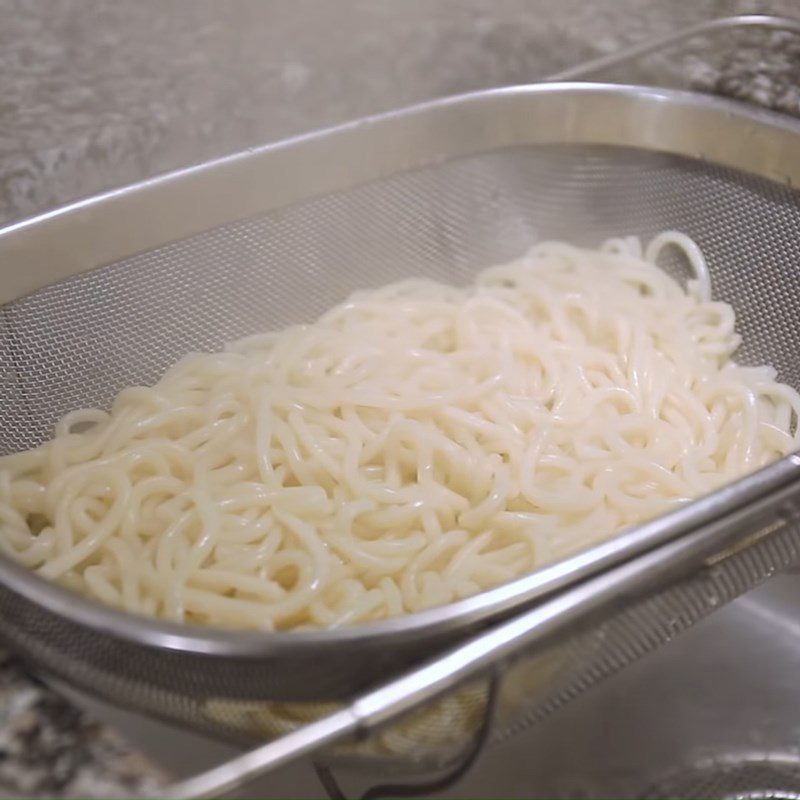
-
Completion
After 7 minutes, the spicy seafood broth has boiled, add 1 tablespoon of fish sauce and 1 teaspoon of salt. Next, reduce the heat, add the chili powder mixed with sesame oil and stir well to ensure the added spices dissolve completely into the broth.
Simmer for another 5 minutes, the broth is boiling and the ingredients are cooked, taste it one last time to suit your family’s preference, then turn off the heat.
When enjoying, serve the noodles in a bowl, ladle the broth and top with seafood and vegetables.
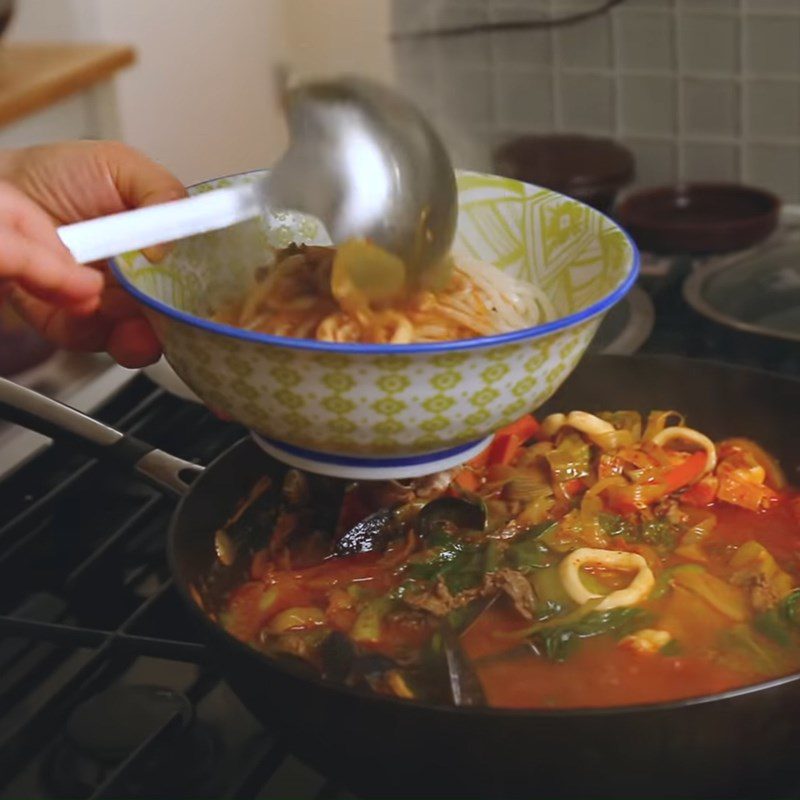
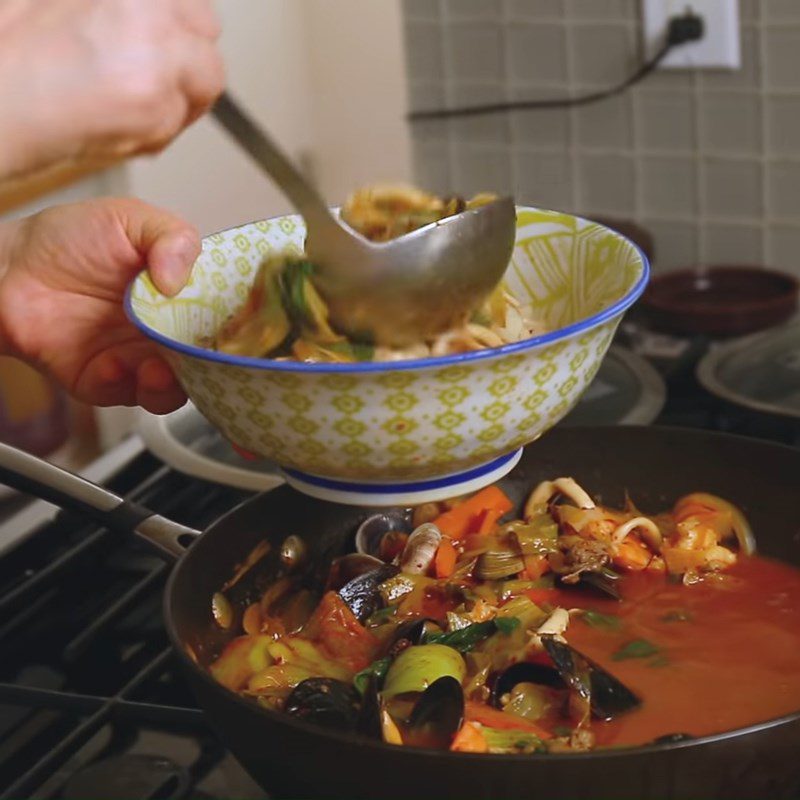

-
Final Product
The spicy seafood noodles champong taste better when enjoyed hot. You can serve this dish with pickled radish.
This dish is appealing thanks to the sweetness from the fresh seafood combined with the crunchy texture of the vegetables and the spicy kick from the Korean chili powder, offering you an attractive dish in both appearance and flavor.
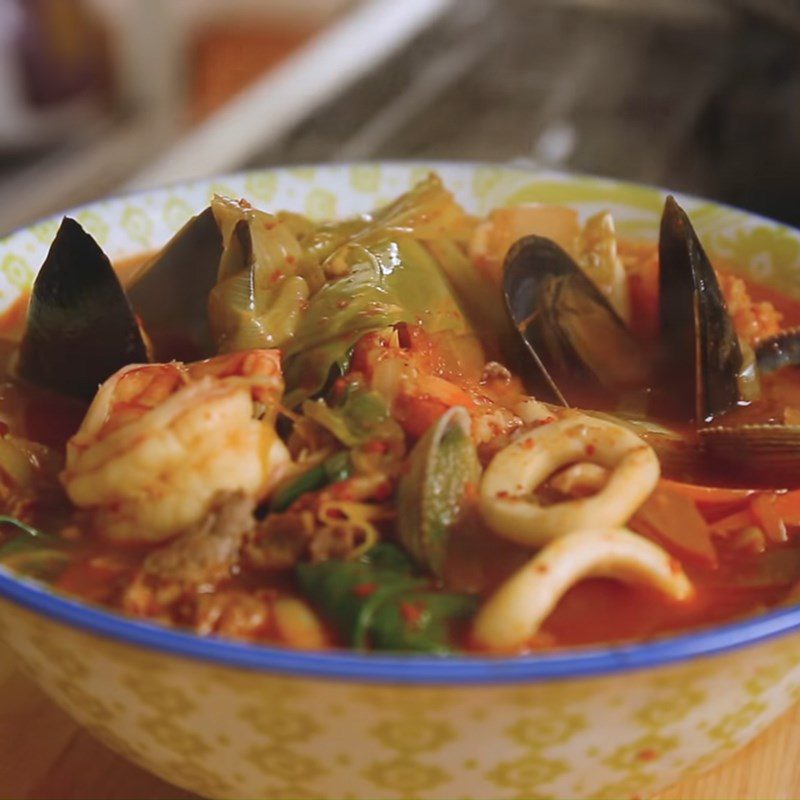
What is champong (jjamppong)?
- Champong (jjamppong) is a type of noodle soup from Korea that includes ramen noodles cooked with main ingredients primarily consisting of seafood such as squid, shrimp, mussels, and vegetables like onions, green onions, carrots, cabbage,… in addition, it can also be cooked with pork or beef to enhance the flavor.
- Most notably, champong has a red broth and a characteristic spicy taste from the famous gojuchang chili powder of Korea.
See more:
The dish spicy seafood champong from Korea is rich in flavor and has many preparation steps, but the final product is incredibly worth it. The dish is enticing thanks to the distinctive aroma of Korean chili powder, along with its eye-catching presentation, will surely create a sensation in the near future. Quickly save the recipe and show off your cooking skills for your friends and family to enjoy.
*Refer to the recipe and images from the YouTube channel Maangchi.
